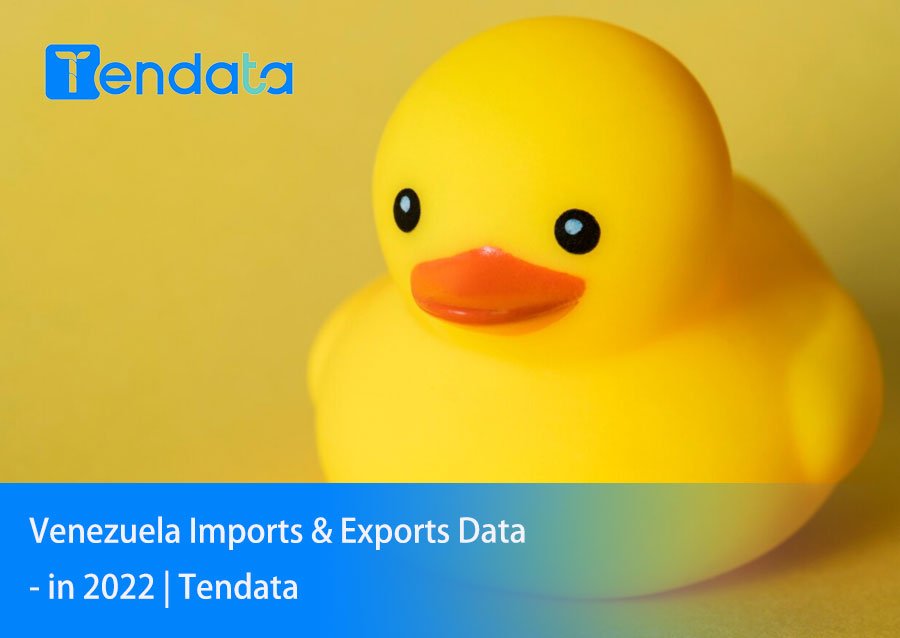 Trade Data
Trade Data
 26-12-2023
26-12-2023

Imports
In 2022, the Venezuela imported products with a total value of $9.5 billion. The total value of Venezuela's imports represents a 13.9% increase in spending on the international market compared to the $8.3 billion spent in 2021.
Venezuela's Top 10 Imports
1. Electrical machinery and equipment: $983.2 million (10.4% of total imports)
2. Cereals: $783.7 million (8.3%)
3. Machinery, including computers: $768.6 million (8.1%)
4. Plastics, plastic products: $555.3 million (5.9%)
5. Vehicles: $523.4 million (5.5%)
6. Animal and vegetable fats, oils, waxes: $459.7 million (4.9%)
7. Cereal/milk products: $381.7 million (4%)
8. Food industry waste, animal feed: $343.2 million (3.6%)
9. Sugar, confectionery: $269.9 million (2.9%)
10. Rubber, rubber products: $234.5 million (2.5%)
Venezuela's top 10 imports account for more than half (56.2%) of its total product purchases for the global market.
Food industry waste and animal feed are the most imported product categories, growing 60.7% from 2021 to 2022. In second place are Venezuela's imports of rubber as materials and articles, up 46.9% year-on-year. Plastic materials and articles grew by 44.1% compared to 2021.
Other top increases were in Venezuela's imports of automobiles (up 37.7%), followed by sugar (up 16.6%).
Exports
In 2022, Venezuela exported $4.8 billion worth of products to the world. This represents an increase of about 32.4% compared to the 3.6 billion dollars in 2021.
Venezuela's Top 10 Exports
1. Fossil fuels, including oil: $1.2 billion (26.1% of total exports)
2. Iron and steel: $1 billion (21%)
3. Organic chemicals: $469.1 million (9.9%)
4. Aluminum: $402.2 million (8.4%)
5. Fish: $357.6 million (7.5%)
6. Fertilizer: $181.9 million (3.8%)
7. Gems, precious metals: $161.7 million (3.4%)
8. Copper: $151.3 million (3.2%)
9. Beverages, spirits, vinegar: $114.2 million (2.4%)
10. Ores, slag, ash: $113.8 million (2.4%)
Venezuela's top 10 export product categories accounted for 88.1% of its total global shipments.
Mineral fuels, including petroleum, are the fastest-growing of the top 10 export categories, increasing 1,168% from 2021 to 2022. Crude oil is the main driver of this growth. Ranking second in terms of improvement in export sales was aluminum, with an increase of 179.3%. Venezuelan fertilizer shipments ranked third in terms of increase, up 150.4%.
The largest decline in Venezuela's top ten export categories was ores, slag and ash, down -73.3% year-over-year. Iron ore and concentrates were among the biggest decliners in this product category.
At a more granular four-digit HS code level, iron or steel scrap was Venezuela's most valuable export, accounting for 13.6% of the country's total exports. In second place were petroleum residues (12.5%), followed by crude oil (12%), acyclic alcohols (9.4%), primary aluminium (7.4%), lobsters and other crustaceans (4.8%), products of reduction of iron ore (4%), nitrogenous fertilizers (3.8%), unwrought gold (3.2%), and then semi-finished products of iron or non-alloy steel (2.7%).
1. Are Free Customs Data Useful?
In the current market, customs data come in two varieties: paid and free. As far as Tendata is aware, many customs data companies claim to have developed a free customs data system, but their core objective is to attract traffic and profit through secondary marketing.
In the current state of the industry, free customs data is primarily superficial public data. In this age of data, valuable information cannot be free. Tendata Data suggests it's better to spend money to purchase it, as Jack Ma once said, "Free is actually the most expensive." (>>> Click to get free customs data from 91 countries.)
2. Customs Data Ineffective? You Might Not Be Using It Right
Many customers often feel that customs data is ineffective or that they're only using a small portion of it when working with import and export data. Tendata Data would like to reiterate the eight major functions of customs data for the benefit of our foreign trade enterprises:
You can find all of these functions in customs data (>>> Click to access sample data online). If you can find them, you're a qualified data user. In addition to this, Shanghai Tendata's Foreign Trade Big Data Business Radar helps foreign trade enterprises manage potential customers online in real-time, understand customer needs, and assists foreign trade personnel in accurately searching for foreign trade customer emails, sending mass emails, producing email reports, and solving email sending dilemmas.
3. Customs Data ≠ Foreign Trade Data; Having Customs Data Alone Is Not Enough
Customs data inquiries include trade transaction data publicly available from customs around the world. This data consists of customs statistical bill-type information. However, what Tendata Company refers to as foreign trade big data goes far beyond mere customs data.
Tendata iTrader boasts customs data from 91 countries, commercial data from 218 countries, and internet data. It encompasses information on over 1.8 billion global businesses, with 100 billion trade data points scrolling every day. It can rapidly and intelligently filter out contact details for 1.21 million executives and decision-makers, including email addresses, phone numbers, social media profiles, and more. It also simultaneously displays company yellow pages, product images, and websites, while offering 17 types of visual reports to help foreign trade enterprises accurately analyze and position themselves in the market, allowing you to quickly find precisely what you need in terms of buyers and suppliers.(>>> Click to use the data for free online.)
Category
Leave Message for Demo Request or Questions


 T-info
T-info T-discovery
T-discovery

 My
Tendata
My
Tendata Market Analysis
Market Analysis Customer
Development
Customer
Development Competitor
Monitoring
Competitor
Monitoring Customer Relationship
Customer Relationship






































































































































